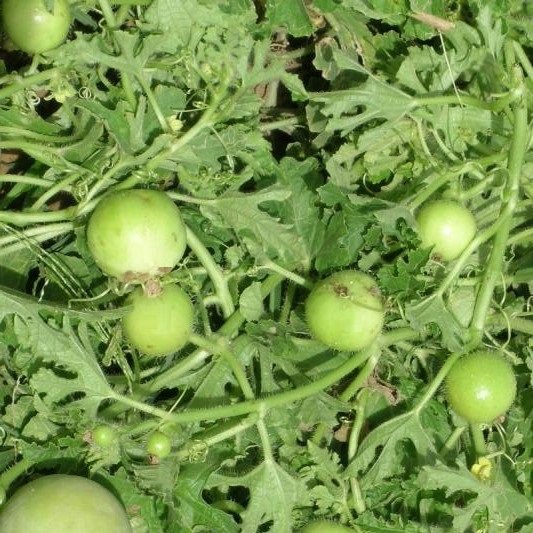Product Overview
Common Name: Tinda, Round Gourd, Apple Gourd, Indian Baby Pumpkin
Botanical Name: Benincasa fistulosa
Type: Non-hybrid, open-pollinated, non-GMO seeds
Uses: Consumed as a vegetable in curries, stews, and pickles. The tender fruit is rich in water content and low in carbohydrates.
Planting Details
Planting Season:
Spring to Summer: Best sowed in late spring to early summer when temperatures are warm.
Avoid planting during cold months as it requires warmth for germination and growth.
Sowing Method:
Direct sowing in prepared soil beds.
Sowing Depth: 1-2 cm.
Spacing: Space the seeds 30-40 cm apart for optimal growth.
Soil Requirements:
Well-drained, fertile loamy soil with a slightly acidic to neutral pH of 6.0-7.0.
Enrich soil with compost or well-rotted manure for better yield.
Germination Period:
Seeds typically germinate in 7-14 days at temperatures of 22°C-30°C.
Plant Care
Sunlight:
Requires full sunlight for healthy growth; a minimum of 6 hours of direct sunlight per day.
Watering:
Water regularly to keep the soil moist, but avoid waterlogging as it can cause root rot.
Drip irrigation is preferred to keep leaves dry and prevent fungal infections.
Fertilization:
Use organic compost to provide nutrients.
Apply balanced fertilizer during the flowering and fruiting stages to promote healthy fruit development.
Pest and Disease Management:
Keep an eye out for common pests like aphids and whiteflies.
Prevent fungal diseases by ensuring good air circulation around plants and avoiding overhead watering.
Growth Characteristics
Plant Height:
Vines typically grow up to 90-100 cm (35-40 inches). Tinda is a climbing vine, so it may require support.
Fruit Characteristics:
Round, smooth, green fruit that grows to about 3-4 inches in diameter when mature.
Harvest the fruit while tender for the best flavor, usually 55-80 days after sowing.
Harvesting
Time to Harvest:
Fruits are typically ready to harvest 55-80 days after sowing, depending on environmental conditions.
Harvest when the fruit is still tender and green for the best taste and texture.
Harvesting Method:
Pick the fruits by hand or use a sharp knife to avoid damaging the plant.
Nutritional Benefits
Low in calories, high in water content, and rich in vitamins A and C.
Helps in digestion and is beneficial for hydration due to its high water content.
Additional Information
Indoor/Outdoor:
Best grown outdoors in a garden or on a trellis for space-saving.
Water Requirements:
Consistent moisture is essential; however, avoid waterlogging.
By following these cultivation and care guidelines, you can grow healthy and productive Tinda plants for a delicious and nutritious harvest.






















Reviews
There are no reviews yet.